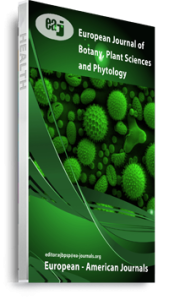14 quantitative traits were studies from 30 genotypes of Urtica dioica grown under shade-nert at National University of Lesotho in a Completely Randomized Block Design (RCBD) with three replicates. The total variation amongst and within the treatments was detected using Analysis of Variance (ANOVA), F-test 5% significance level. The pattern analysis was deployed to detect the relationship amongst the accessions. The ANOVA showed a highly significant difference (P< 0.01) among the accessions on all phenotypic traits measured as obtained from analysis of variance. The LSD comparison of the means for various traits ranked them in descending order. The Hierarchical Cluster Analysis (HCA) identified two main groups (group A and B) with significant genetic distance between both the accessions and morphological traits. The groups were further sub-grouped into i, ii, iii and iv to show similarities among the accessions. The Principal Component Analysis (PCA) showed that plant height, length of internodes, number of leaves and number of nodes are the most important traits in determining the variation amongst accessions.
Keywords: Genetic diversity, Principal Component Analysis, U. dioica, hierarchical cluster analysis, stinging nettle

